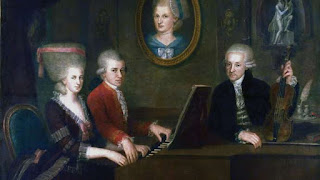In October 1833, a friendly society of agricultural labourers was founded in Tolpuddle, Dorset by the local Methodist lay preacher and farm worker, George Loveless. So it’s aim was to secure for its members a fair pay for their labour, which had been depressed by the increasing mechanisation of agriculture. Societies like the Tolpuddle Friendly Society have been springing up across the country, part of a widespread movement aiming to unionise unskilled agricultural labourers. Lord Melbourne, the Home Secretary, while remembering the recent Swing Riots, was hostile towards this development and supported the local magistrate who arrested Loveless and five other associates on charges of administering illegal oaths, prohibited by an act of 1797.
0:51
Skip to 0 minutes and 51 seconds
In the rushed and rigged trial that followed presided over by Melbourne’s brother-in-law, the six men were convicted and transported to Australia. The result was a public outcry with the Tolpuddle men being described as martyrs. We have to remember at this time, that friendly societies were technically legal following the repeal in 1824 of the Combinations Act. The choice to prosecute the Tolpuddle six for administering illegal oaths as part of members initiation into the society, was therefore seen as a devious tactic for quashing a peaceful and lawful union. We can see the scale of the outcry in this engraving of the famous protest meeting at Copenhagen Fields in April 1834, where up to 100,000 people demanded the Tolpuddle martyrs be pardoned.
1:35
Skip to 1 minute and 35 seconds
If we look closely, we can also see the waggon, which carried their 200,000 signature petition to Parliament. Eventually, after a long and hard fought campaign, in 1836 the martyrs were pardoned by Melbourne’s successor as Home Secretary, Lord John Russell, and they returned home as freeman. Their plight though was seared into the collective memory of the labour movement for decades to come, and, in fact, is still remembered and commemorated to this day. For example, in 1951, Ern Brooks, a working class artist, made this commemorative print the Tolpuddle martyrs as a fundraiser for the Communist Party newspaper, The Daily Worker. This depicts a prison hulk the Tolpuddle martyrs were imprisoned in prior to their transportation.
2:18
Skip to 2 minutes and 18 seconds
What is particularly significant about both of these images, is that they stand as a testament to not just the personal hardships endured by the Tolpuddle martyrs, but also of the importance that their story holds for the labour movement stretching from that mass meeting at Copenhagen Fields to the 20th century and beyond.
Zur Rezeption von Franz Kafka und Samuel Beckett in Rumänien
Receptarea lui Franz Kafka şi a lui Samuel Beckett în România Abstract Teoria receptării a înregistrat în ultimii ani o dezvoltare impresionantă, astfel încăt s-au putut trasa linii generale de descriere a unei direcţii de receptare în conformitate cu anumite tipologii estetice care marchează receptarea literară la nivel de receptor cult şi instruit. Acestea sunt premisele principale de la care porneşte cercetătorul în căutarea sa de modele şi modalităţi literare de receptare. S-a vorbit astfel de patologii de receptare, de estetica personajului şi nu în ultimul rănd de o receptare critică a operei literare. Sarcina cu care se confruntă cercetătorul în demersul său este de a descoperi în ce măsură opera examinată capătă caracter normativ la nivelul unui grup de receptori care aderă la stilul, forma şi limbajul literar al autorului receptat. Franz Kafka şi Samuel Beckett se integrează în categoria scriitorilor emblematici ai modernităţii şi drept urmare am considerat că un stud...

Comments